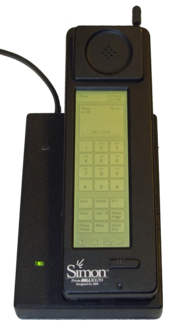
Today, 23 November 2012, is the 20th anniversary of the launch of the first smartphone. The IBM Simon was a handheld cellular phone and PDA that ended up selling some 50,000 units. This was impressive as, at the time, publicly available cellular networks were a rarity.
In fact, at the London launch of the device, I remember wondering how many people would buy one given the high costs of both a subscription and the phone. In the USA, BellSouth Cellular initially offered the Simon for US$899 with a two-year service contract or US$1099 without a contract.
As well as a touch screen, the widget included an address book, calendar, appointment scheduler, calculator, world time clock, electronic note pad, handwritten annotations, and standard and predictive stylus input screen keyboards.
Measuring 203mm by 63.5mm by 38mm, it had a massive 35mm by 115mm monochrome touch screen and weighed a stonking 510g, but was only on the market for about six months. The UK never saw it commercially available.
So while it never really took off, this was largely down to timing: it was ahead of its time and it was soon overtaken by smaller, less well-featured devices that were more affordable.
But when you contemplate which shiny shiny is your next object of desire, think about the Simon, and remember, Apple didn’t invent the smartphone: IBM did.
